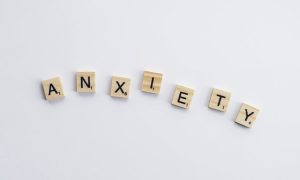In recent years, the conversation around intelligence has evolved, leading to a growing interest in emotional intelligence (EI) alongside traditional intelligence (IQ). While traditional intelligence encompasses cognitive abilities such as problem-solving, logical reasoning, and analytical skills, emotional intelligence refers to the ability to recognize, understand, and manage one’s own emotions and the emotions of others. This article explores the fundamental differences between these two types of intelligence and their implications in various aspects of life.
The distinction between emotional intelligence and traditional intelligence is crucial in understanding how individuals navigate their personal and professional lives. Traditional intelligence is often measured through standardized tests, which assess cognitive skills and knowledge. In contrast, emotional intelligence is more challenging to quantify, as it involves interpersonal skills, self-awareness, and empathy. As workplaces increasingly value collaboration and emotional well-being, the relevance of emotional intelligence is becoming more pronounced.
One significant area where emotional intelligence shines is in leadership. Leaders with high EI are often more adept at managing teams, as they can effectively communicate, inspire, and resolve conflicts. In contrast, leaders who rely solely on traditional intelligence may excel in technical skills but struggle with interpersonal dynamics. This difference can lead to a more cohesive and motivated workforce when leaders embrace emotional intelligence, fostering an environment where employees feel valued and understood.
Education also presents a compelling comparison between these two forms of intelligence. Traditional intelligence has long been the focus in educational systems, emphasizing rote learning and standardized assessments. However, the rise of social-emotional learning (SEL) programs highlights the importance of emotional intelligence in shaping well-rounded individuals. By integrating emotional intelligence into curricula, educators can equip students with vital skills such as empathy, resilience, and effective communication, which are essential for success in both personal and professional realms.
In the realm of mental health, the differences between emotional and traditional intelligence become even more pronounced. Individuals with high emotional intelligence tend to have better coping strategies, allowing them to manage stress and navigate challenges more effectively. They are often more in tune with their feelings and can express themselves in constructive ways. Conversely, those who focus primarily on traditional intelligence may overlook the emotional aspects of their experiences, leading to increased stress and potential burnout.
As we consider the implications of emotional intelligence versus traditional intelligence, it becomes clear that both forms of intelligence have their place in society. Traditional intelligence is essential for academic and technical proficiency, while emotional intelligence plays a crucial role in interpersonal relationships and overall well-being. Striking a balance between the two can lead to a more holistic approach to personal and professional development.
In conclusion, understanding the differences between emotional intelligence and traditional intelligence is vital in today’s complex world. While traditional intelligence has its merits, the growing recognition of emotional intelligence highlights the need for a more integrated approach to intelligence. By valuing both forms, individuals can enhance their capacity for empathy, collaboration, and effective communication, paving the way for a more emotionally intelligent society. As we move forward, fostering emotional intelligence alongside traditional intelligence will be key to navigating the challenges of the modern era.



